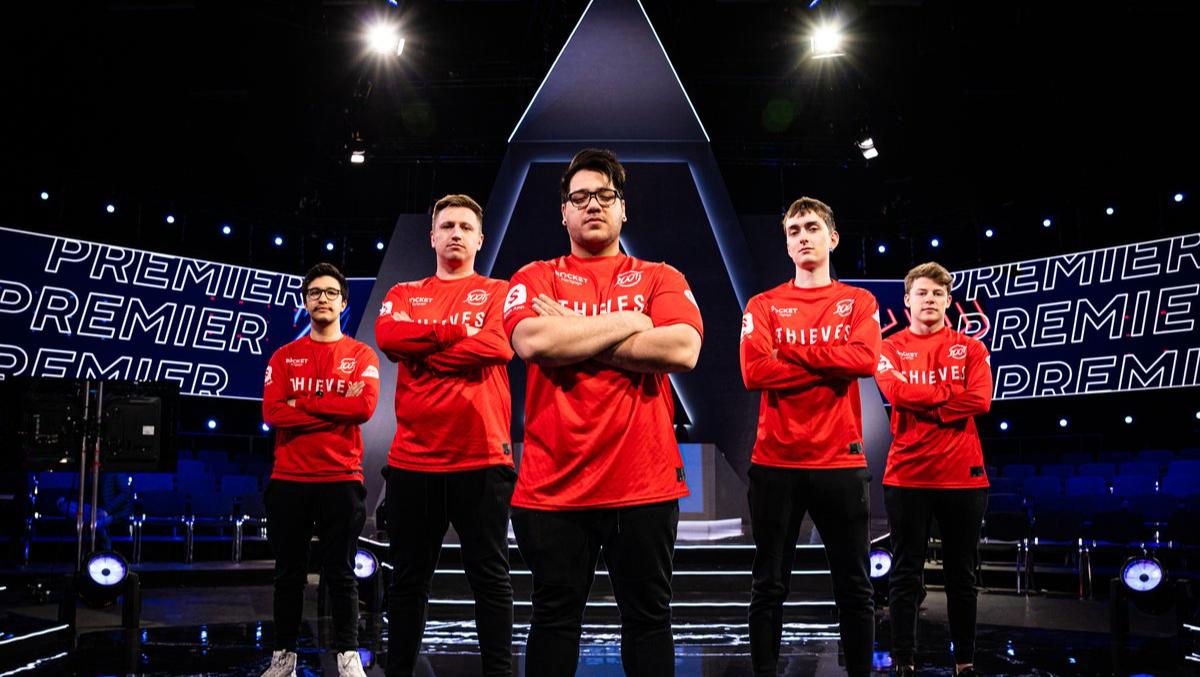
Why are big esports organizations leaving CSGO?
Since the start of 2020, several prominent esports organizations have decided to drop their Counter-Strike: Global Offensive roster and abandon competing in the game.
While the current economic situation has made organizations more careful about investing in lineups across all games, CSGO is hit especially hard. 100 Thieves closed their CSGO division, Gen.G transfer-listed its lineup and isn’t thought to be interested in picking up another roster, and North seized its entire operation. This is due to several problems with the game that have been hurting the scene for a while.
The recent trend in esports is for games to establish a franchise. This means that the developer gets involved with the pro scene and creates one unified league. Teams can buy a spot in this league and will often receive a cut of its profits. It’s a system inspired by traditional sports leagues such as the NFL and NBA. Overwatch, League of Legends, and Call of Duty all use this model, with varying results. In theory, a franchise should give better profits and stability to an organization, as they can’t be relegated and are shareholders in the league.
Valve has consistently refused to franchise any of its games. It supports an open circuit, with different tournament organizers hosting multiple events across the world. Teams have to obtain invitations to these events or play qualifiers in the hope of reaching the main event.
This system can be great for viewers, with top teams meeting in a grand final every other week. But it isn’t as beneficial for teams. They don’t receive a share of the tournament earnings, and disappointing results could see them fall out of contention for invites to the bigger events.
ESL, Flashpoint, and BLAST, three of the biggest tournament organizers, have tried to counter this. They made several teams partners in their leagues. This gives the team a guaranteed invite to certain events and a minor cut of the revenue. But the partner system isn’t necessarily enough to cover the costs of fielding a CSGO roster.
Are top CSGO pro players earning too much money?
In 2015, CSGO experienced its first boom. The player base grew exponentially, and the number of people who watched the major increased drastically. Between the last major of 2014, DreamHack Winter, and the first of 2015, ESL One: Katowice, the peak viewer count of the respective grand finals doubled. Along that growth came a boom in wages of top professional players, as teams were desperate to field a top roster in the game. This may have brought the game to a point where pro players are earning too much money to keep the circuit system sustainable for most organizations.
An example of this is the contract extension offered by Virtus.pro to its Polish CSGO lineup. Their contracts were expiring at the end of 2016, and they were rumored to have received several offers from different teams. Desperate to keep the major-winning roster under its banner, Virtus.pro gave the group four-year contract extensions. The Russian organization called it the longest and most expensive deal in esports history.
Teams were willing to offer those high wages because the game was showing so much potential. But while the number of CSGO players kept going up over the years, the number of people watching the esport has not risen quite as sharply, and Valve hasn’t help organizations to better profit from competitions. Players refused to lower their demands, teams kept meeting them while waiting for another boom. With teams no longer being able to invest as they used to, many have decided to no longer wait for that coveted second boom.
Can CSGO attract enough sponsors?
The greatest financial strength of esports has is its ability to draw in outside investors and marketing, often in the form of sponsors. Companies are drawn in by the young audience, a valuable target audience. Coca-Cola has signed big deals with both the Overwatch League and the League of Legends franchises. BMW entered a partnership with five of the most prominent LoL teams, combining a sponsorship with content creation. Various celebrities and sports figures are direct investors in some of the biggest esports organizations.
But many of these outside investors have one thing in common: They prefer a more polished and family-friendly product. Overwatch and League of Legends have very strict rules about the way players should behave, both in and out of the server. The action in the game is more similar to a cartoon, hardly reaslistic in its depictions.
CSGO has taken a different path. The game uses terrorists as its main protagonists and has an explicitly violent tone. This has resulted in CSGO primarily attracting gaming-related advertisers. But bigger brands that are not affiliated with gaming generally stay clear of the game.
Teams are abandoning CSGO due to a lack of financial sustainability in the scene. There’s a need for structural changes, both from the players and the organizations, but most importantly from Valve. If we don’t see these changes in the near future, more teams might be tempted to turn their back on the storied game.
Recommended

s1mple is offering lessons to help you get good at CS2
Have you dreamed of playing like s1mple?

Recent CS2 ban wave punishes cheaters during live games
Valve is banning players in bulks.

Players hopeful after Valve adds Overwatch to expose CS2 cheaters
Only “trusted” players will be Overwatch investigators.







